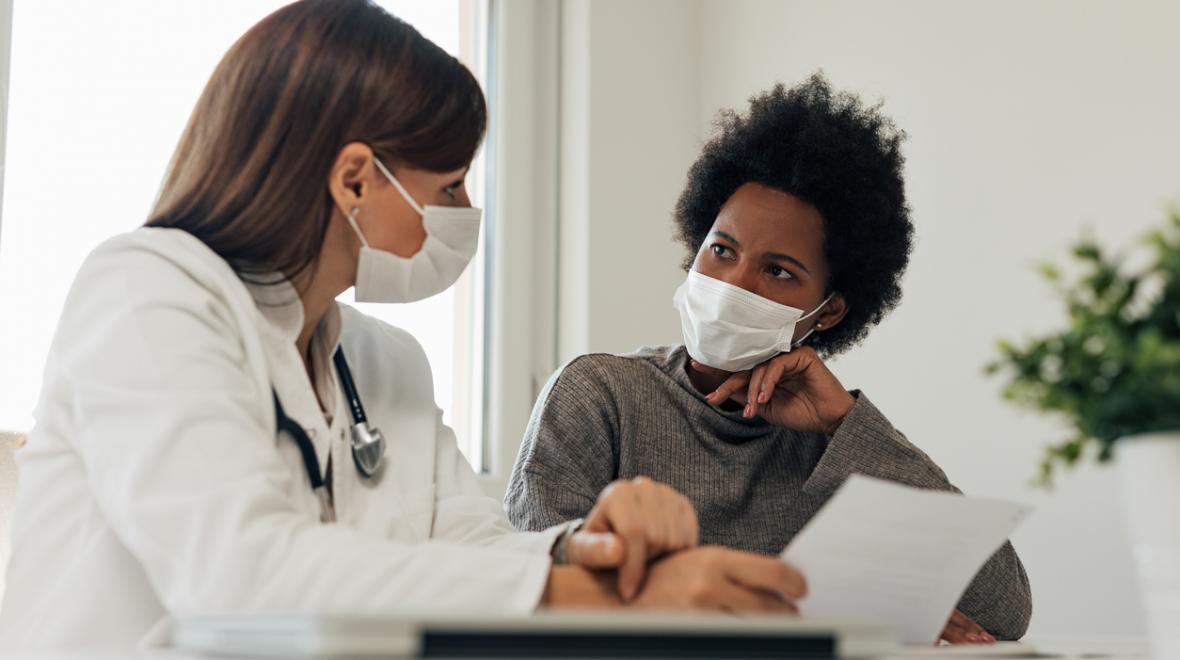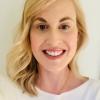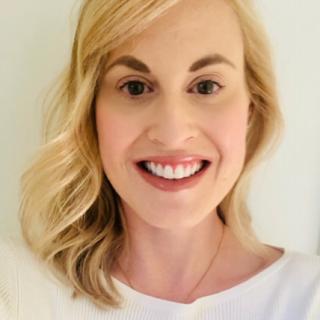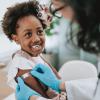
Editor's note: This article was sponsored by Rivkin Center.
Today’s moms are so swamped with work and family obligations, we often neglect our health-care needs without a second thought. But when it comes to preventive care such as mammograms and regular cancer screenings, it’s important not to procrastinate, even when we’re feeling perfectly healthy.
According to the American Cancer Society, one out of every eight women will develop breast cancer during her lifetime. Ovarian cancer, known as the “silent killer,” is the deadliest reproductive system cancer among women, because all too often it’s not diagnosed until it’s progressed to later stages, drastically reducing its cure rate.
September is Ovarian Cancer Awareness Month, and October is Breast Cancer Awareness Month. In a conversation with ParentMap, experts at Seattle’s Rivkin Center shared the signs and symptoms of breast and ovarian cancer women should look out for, plus how to be the best advocate for their own health. If you’re a busy mom who’s putting yourself last, it’s time to flip the switch. After all, you’d never skip your kiddo’s annual exam, and your health deserves that very same attention and priority.
Know your family history
Drea Mizer, a mother, restaurant owner and Rivkin Center board member, was in her early 30s when she was diagnosed with Stage 4 ovarian cancer. A young professional working upwards of 60 hours per week in a stressful job, she took a much-needed trip to Hawaii to decompress. “On vacation, my pace slowed down enough that it allowed me to notice my symptoms.” Fatigue and severe lower back pain that “definitely felt internal, not like a muscle” persisted for the duration of her island stay, but then seemed to disappear when she returned home.
Soon after, Mizer’s cat jumped on her lap and began incessantly pawing at her abdomen. It wasn’t something he’d ever done before, and later that night Mizer noticed that the area hurt. Examining it further, she palpated a “massive lump, which was actually my internal organs being pushed to the side and up from the tumor that was behind them,” she recalls. Three weeks later, after receiving a pelvic ultrasound, two CT scans and three biopsies, her diagnosis was confirmed. Mizer subsequently underwent eight rounds of chemotherapy, several blood transfusions and two surgeries.
Mizer also had genetic testing done, discovering that she was positive for the BRCA1 gene mutation. Women with the inherited genetic variants BRCA1 or BRCA2 are at a much greater risk of developing breast and ovarian cancers than the general population. Some choose to undergo risk-reducing surgeries such as the removal of both breasts and/or the removal of the ovaries and fallopian tubes. In addition to BRCA1 and BRCA2, researchers have discovered many other genes that are known to contribute to ovarian cancer.
“I didn’t know the BRCA1 gene mutation ran in my family, or that my paternal grandmother had died from ovarian cancer. I didn’t know that I was at high risk until I was diagnosed with ovarian cancer,” says Mizer. “I adopted the motto of head up, shoulders back, keep moving forward. I did whatever it took to fight to stay alive,” she says, and in 2009, she was declared NED: no evidence of disease.
Get regular screening tests
Six years after her ovarian-cancer diagnosis and treatment, Mizer detected a lump in her breast during a self-exam. She’d known that her risk of getting breast cancer was higher (ovarian and breast cancer are often linked, especially when gene mutations are present), but she’d become distracted with raising her newborn son and 3-year-old daughter. “Because of my BRCA1 status, I was supposed to be screened every six months, but it had been a couple of years since my last exam. I had let life get too busy and had let my priorities slip, and it rocked my world,” says Mizer, who elected to have a double mastectomy followed by chemotherapy and the removal of multiple lymph nodes. “Somehow, I got lucky. I am still here,” she says.
Tempting as it may be to put off your next mammogram, Mizer emphasizes the importance of staying on schedule. “As a busy self-employed working mom, I get it,” says Mizer. “I don't have enough minutes in the day to keep up with my dishes and my laundry, let alone go exercise like I want to. Making that appointment when you feel great just doesn’t feel like a priority. But by taking the time now, it can save you so much time later — If you don't catch [cancer] early, the duration of dealing with it is so much longer and harder,” she says.
Indeed, early detection can have a dramatic impact on treatment outcome. “Women whose breast cancer is detected by a mammography, a monthly self-breast exam, or an annual clinical exam by a practitioner are much more likely to be detected at an early stage, and the earlier stage women are diagnosed at, the better the outcomes,” says Dan Veljovich, M.D., a gynecologic oncologist at Seattle’s Pacific Gynecology Specialists and a board member at the Rivkin Center. “Studies suggest that for every 200–250 women who are screened for breast cancer, about one life will be saved. We know that among women who get regular screenings, the likelihood of needing a mastectomy or needing chemotherapy is significantly less,” says Veljovich.
When it comes to ovarian cancer, Veljovich notes that the key is knowing your family history. “In a trial called the United Kingdom Familial Ovarian Cancer Screening Study, women with a family history of breast or ovarian cancer who underwent screening had a shift towards earlier-stage disease [detection], and in ovarian cancer, the stage of the disease is really tightly linked to mortality. So, if you can detect more women in an earlier stage with ovarian cancer, there’s a significantly better outcome, meaning about 70–80 percent of women will be cured, whereas with advanced-stage disease, sadly It’s only about 20–30 percent of women who are cured,” he says.
“Forewarned is forearmed. There are so many cancer-producing genes that we know about now, and so I think for anyone who has a strong family history, it’s just really important that they talk to their primary care physician and that they see a certified genetic counselor,” advises Veljovich.
Know the signs and symptoms of breast and ovarian cancer
If you’re already looking out for lumps during your monthly breast self-exam, great! Just be sure to check under your armpits as well; breast cancer can sometimes affect the lymph nodes in that area. Pay attention to areas of asymmetry on the breasts as well as more subtle signs such as retraction, dimpling and puckering of the skin. Look for other abnormalities, such as changes in the skin color of the breast or discharge, says Veljovich.
Although there isn’t a screening test for ovarian cancer, specific symptoms referred to as the ovarian cancer symptom index can help identify women who are at risk. Researchers at the University of Washington looked at women diagnosed with ovarian cancer to see what symptoms they had prior to diagnosis. In women who experienced the following symptoms more than 12 times per month for less than a year, there was an increased correlation with ovarian cancer: pelvic or abdominal pain, urinary urgency or urinary frequency, increased abdominal size/bloating and early satiety (feeling full before finishing a meal).
Above all, know your body. “It’s important for women to understand that if something just doesn’t feel right, they should see a health-care provider,” says Veljovich. In terms of ovarian cancer prevention, oral contraceptive pills offer a very significant risk reduction, he says. “Women who take the birth control pill for six years or more have about a 50 percent reduction in the risk of ever getting ovarian cancer in their lifetime, and that also holds true for BRCA1 and BRCA2 carriers,” he notes.
About the Rivkin CenterBased in Seattle and started 25 years ago, the Rivkin Center funds ovarian cancer research nationally and internationally, and provides free health education workshops in colleges, communities and corporations throughout the West Coast, so women can live longer and healthier lives. Visit rivkin.org/awareness to assess your risk using its free breast and ovarian cancer risk calculator, and sign up to learn more at a 45-minute virtual education workshop on either Sept. 29 or Oct. 20, 2021. |
|
Sponsored by: |

|











